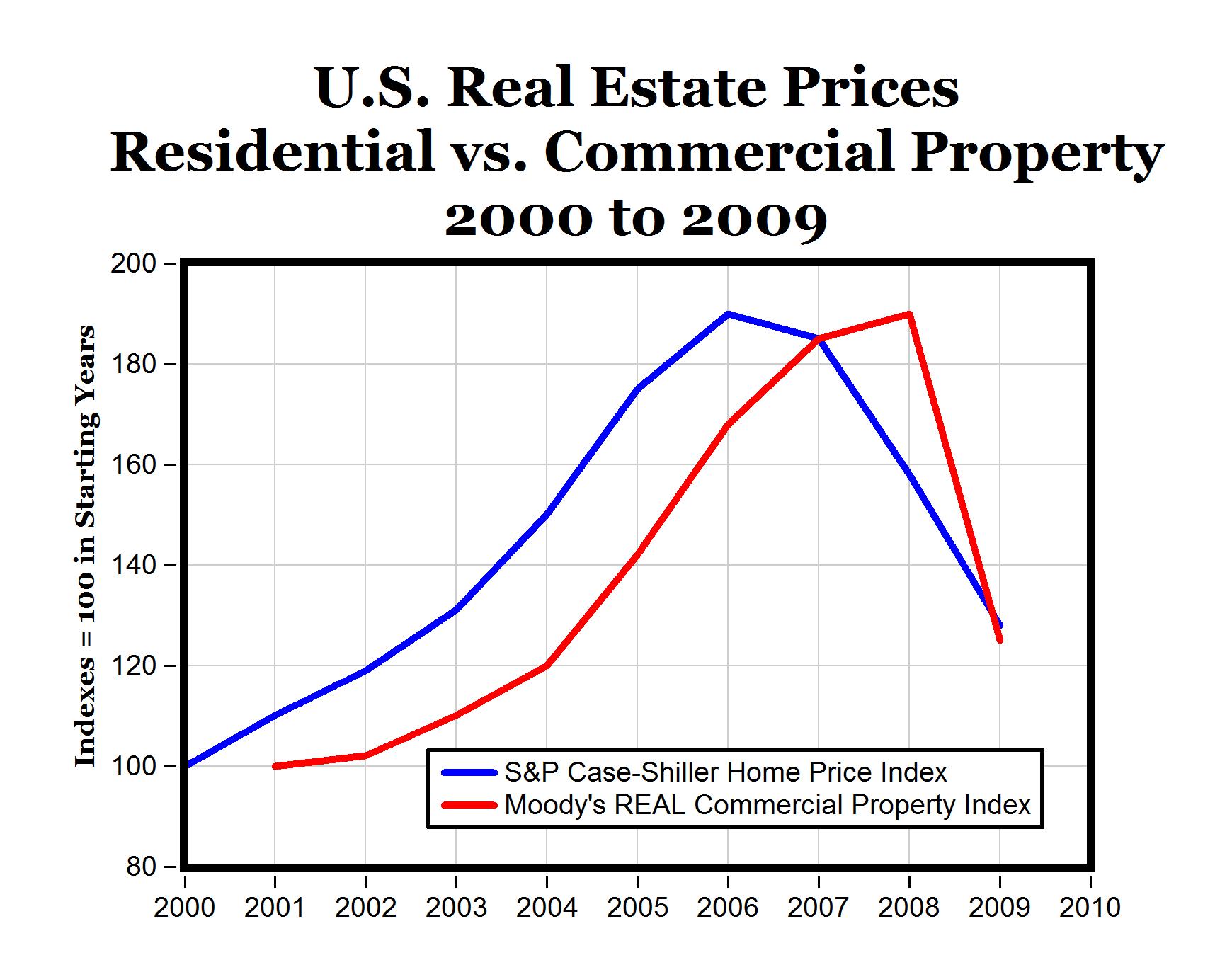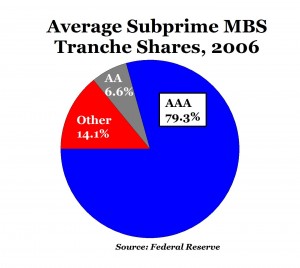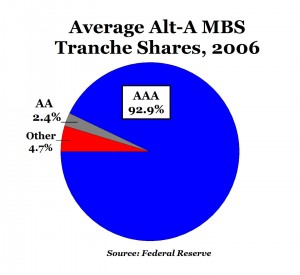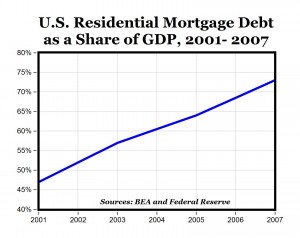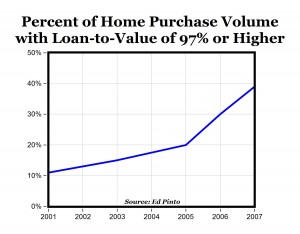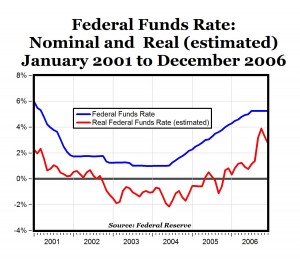Control of climate research funding was a critical part of the machinations of Maurice Strong and the Intergovernmental Panel on Climate Change
Dr. Tim Ball
There are two sides to every story. The Chinese express it as Yin and Yang represented by a symbol.
Yin is black and Yang white, but the dots indicate nothing is purely one or the other. Many react with cultural bias by assuming white is good and black is bad.
The idea of balance is possibly one of the greatest victims of political correctness. It has distorted climate science, because they only considered one side and refused to follow the scientific method.
This requires you to have a theory, which you try to disprove. If it's disproved you must then consider the null hypothesis. In the case of the anthropogenic warming hypothesis (AGW) they set out to prove that human CO2 was causing warming and climate change. They claim they proved it, but did so by restricting focus and manipulating data and computer programs. The null hypothesis was not allowed. Normally, they would find that human CO2 was not the cause and then ask the question, if not CO2 then what? It was a question aggressively asked of skeptics and the obvious simple answer was the sun. It's why there was an active campaign to discredit the sun as the explanation. A major confusion is that the null hypothesis is considered a negative, possibly because the word null can mean zero. In the scientific context it means if it isn't this, then it is something else.
Political correctness and the blind drift toward equalization or elimination of differences have prevented identifying successes or failures
Political correctness and the blind drift toward equalization or elimination of differences have prevented identifying successes or failures. It appeared in the schools when children were no longer allowed to fail. What was overlooked in all this was the function of identifying and promoting differing skills and abilities. I explained to a student who thought because he failed my course, he was a failure. All it meant was that he was not a climatologist. He might be the best in the world in some other area and that is what he should pursue. The concept of testing, passing and failing has become so distorted that reasonable discussion is almost impossible.
Several years ago, I participated in a debate at a Canadian High School on the motion that "School leaving exams are unnecessary." I argued against the motion. Supporting the motion was a declared socialist and faculty member of an education department. Prevailing wisdom, at least in academia and left wing political groups, was that failure was not allowed. Students were passed on to the next grade and eventually graduated from school without ever achieving any measured standard. Teacher's unions argued against them because they were a measure of the teacher's ability. My closing remarks included the comment that everyone in the room should hope the next time they fly that the pilot has achieved a certain level of competence.
Before the Internet existed, exchange of information was slow and difficult. A former colleague was working on his doctoral thesis at a British university while teaching in Canada. It was a math doctorate and required a new theorem defined as a general proposition not self-evident, but proved by a chain of reasoning. After two years working on two lines of reasoning with no success, he met with his supervisor in England. He was advised both lines were explored by former colleagues of the supervisor and abandoned. When he asked where this was in the literature he learned that negative results are not published. Why not? Surely such results are valuable and only deemed without value by the negative label.
The concept of classifying results as negative is part of the practice of not allowing failure. Students are imbued with the idea that a negative result is a failure. For example, in universities they write research papers or carry out lab experiments. They only pursue positive results. For example, if they research a topic they will only consider evidence that supports their original hypothesis. Some will abandon a topic rather than consider the null hypothesis.
We now have people who went through a system that did not consider negative results or failure. This is adversely encouraged by the increasing role of funding in research, and promotion in academia. Funding agencies seek researchers who are disposed to produce results deemed positive and they will only select information and perform experiments to satisfy that predisposition. This practice is why promoters of AGW successfully accused skeptics of being funded by energy companies. They conveniently ignored the fact that government funding is more directed because it always has a political agenda. Control of climate research funding was a critical part of the machinations of Maurice Strong and the Intergovernmental Panel on Climate Change (IPCC).
Research about acid rain from US coal plants destroying Quebec's maple syrup industry
A few years ago as chair of a national climate research group, a bureaucrat asked for a private meeting. His dilemma involved research about acid rain from US coal plants destroying Quebec's maple syrup industry. The Canadian Prime Minister was publicly pointing the finger. His research showed decreases in yields were due to droughts and a pattern of very early warming followed by hard frost. Both conditions caused dieback, a situation in which the tree will go through its growth cycle to produce seed but with reduced activity – hence less sap. This contradicted what he was told to prove. What to do? It's obvious, but very difficult. He must retain his scientific integrity, but the dilemma is political. He isn't paid to make those decisions so he simply submits his report and it will move up the bureaucracy until someone shelves it, usually protected with an unnecessary high security classification. Within ten years the syrup yields reached record levels and a bilateral panel (3 US and 3 Canadians as required by the International Boundary Commission) confirmed what he found.
Climate science deception by the IPCC and all involved worked because integrity in science and research failed
Climate science deception by the IPCC and all involved worked because integrity in science and research failed. They ignored scientific protocols that require you disprove a theory. They ignored the procedure that if the theory is disproved you must consider the null hypothesis. Only positive results are acceptable and seen as successful, even if they're totally wrong. Too many will do whatever it takes to achieve an objective without a thought to balance or integrity because failure doesn't exist and even if it occurs, you are not accountable; they simply move you to the next grade. Ultimately, you only fail because society fails.
Dr. Tim Ball is a renowned environmental consultant and former climatology professor at the University of Winnipeg. Dr. Ball employs his extensive background in climatology and other fields as an advisor to the International Climate Science Coalition, Friends of Science and the Frontier Centre for Public Policy. This article used by permission originally appeared on Canada Free Press
Dr. Ball can be reached at: Letters@canadafreepress.com
Older articles by Dr. Tim Ball
RELATED ARTICLES:
'Green' jobs become redistribution scam in hands of New Black Panthers
All weather is due to global warming?
The Immortal Tyranny Of Climate Change
EPA and environmental lawyers winning
Obama continues warming push as solar activity declines and cooling continues
Unstoppable solar cycles are key to climate not CO2
UK winter forecaster says global warming is failed science based on fraudulent data
Controlling weather and the economy – LOL
From greenhouse gases to green agenda: 5 energy issues to watch
Loony US Senator Writes Letter to Santa About Global Warming… No, Seriously
The Sierra Club's Mission
The Abiding Faith Of Warm-ongers
There's a mini ice age coming, says man who beats weather experts
D.C. Dim Bulbs Outlaw Edison's Greatest Gift
UN subterfuge…the global warming hoax
Understanding the Cancun climate scam
England set for coldest ever night of MINUS 26C as big freeze destroys travel plans for millions
Has the Obama administration gone insane? Napolitano Says DHS to Begin Battling Climate Change as Homeland Security Issue
The Pyramid of Frauds
Time to Freeze Global Warming
Enforcing the propaganda of climate dogma
Sadistic Judges Back EPA Climate Rules
Inhofe: WikiLeaks climate revelations show Obama's 'desperation'
Climate Distortions Were Achieved. National Weather Agencies Are The Trojan Horses
The politics of fear and hyperbole
Abdication of the West at COP16 Cancun, Mexico
UN official admits climate change is about global redistribution of wealth
Climate Change Not a Political Issue Anymore Except For Mainstream Media
Powerful Democrats help Chinese energy firm chase stimulus money
Taxpayers subsidizing almost half of ethanol costs
Green subsidies falling prey to economic reality across the globe
Cancun Climate Talks Really About Wealth Redistribution
WikiLeaks And Claim Of Warmest Year On Record, Expose Climate Criminality
Cancun climate conference: the warmists' last Mexican wave
Global Warming… no Global Cooling… no Global Warming…NO, IT'S COOLING!!
WikiLeaks cables reveal how US manipulated climate accord
Senators warn Clinton against helping poor countries fight climate change
Another Climate Change Scare Is On Thin Ice
Apocalypse Now! (Or Pretty Soon, Anyway)
The U.S.'s 'Little Shop of Horrors' Turns 40
Phony Claims Infest Cancun Climate Conference
Top Science Panel Caught in Another Global Warming Data Fraud
US tells climate conference 'not backing away' from $100 billion climate fund
The Last Fling of the Thermophobics?
There are black days ahead for the carbon industry
Obama plans to avoid congress for global climate agreement
Time For Economic Restoration Now That Climate Change Deception Is Exposed
GOP should say no on Upton energy and commerce chair
Will The Light Bulb Ban Inspire A Conversion?
Boycott the Cancun Climate Circus
Climate Deception Is A Crime Against Humanity?
Global Warming Skeptics Ascend In U.S. Congress
IPCC Exclusions And Inclusions Of Climate Mechanisms Are Both Failures
Another Top International Scientist Jumps off Global Warming 'Titanic'
Cars, Cattle and Ethanol
Why the Government Should Stay Out of Green Energy
Thanks to Congress, Ethanol and Biofuel Mandates Cause Food Prices to Soar
Al Gore presidential aspirations cost US $16 billion in worthless ethanol subsidies and caused world's poor to pay more for food
Electric cars could cause blackouts
Investors Business Daily calls global warming a 'scam' and 'Marxist'
No policy on climate is better than bad policy
UN climate official admits climate hoax is about redistributing wealth globally
November 20, 2009: The Day "Global Warming" Ended
The Left and Energy Policy
Inconvenient nonsense infiltrates the classroom
Man-made global warming – the BIG lie
Climategate: One Year and Sixty House Seats Later
Memo to House GOP: Get a grip on the EPA
The Renewable Electricity Standard Con
Global Warming, Global Taxes pushed by Obama administration
Dems extol facts and science but act on ideology
Time to end the mother of all corporate welfare: ethanol subsidies
Hiding climate truth from journalists
Official Climate Science Ignores Essential and Critical Details Right At The Surface
Biofuel worse for climate than fossil fuel – study
Global crooks – Soros, Summers call for global bank and carbon taxes
Day of reckoning for climate clowns
Obama still intends to redistribute your green with his green agenda
The Green Bubble is about to Burst
Transparency According to Carol Browner: "Put nothing in writing, ever"
Climate History Key to Future; Inuit Travels Provide Political Direction
Whining Kerry says America 'lost our minds'
John Kerry's Big Business Buyoff to get cap and trade passed
Crime, Inc. (also known as cap and trade) highlights -parts A, B, C, D
The many links between failed Shore Bank and Chicago Climate Exchange criminal enterprise
Why they still push carbon trading – money
Is Green Socialism EPA's Real Goal?
Energy and anger
How EPA Could Revive Cap-and-Trade
5 Leftist Lies About the Best Source of Oil on Earth
It ain't easy being green
Dem energy tax just won't die
Pop Went the Climate Bubble
Who's 'In Climate Denial, Again'? The New York Times
Is the EPA Trying to Murder the USA?
Frightening Quotes from Environmentalists
Corrupted Climate Science Exploited Basic Human Realities
Is green the new red (communism)?
Time to get real about climate change
The $10 Trillion Climate Fraud
Climate Science Corruption: Practiced And Perpetuated By Scientific Societies
'Obama's EPA a Growing Menace to Economy' – Sen. Inhofe
BIG GREEN 3, Green Gold: BP, GE & the World's First Carbon Billionaire
The Green $windle
The Big Green machine – The Big Money & The Global Governance Agenda That Fuels Environmentalism
Al Gore's Carbon crusade: The Money and Connections Behind It
Another Massive Energy Tax Looms on the Horizon
Renewable Electricity Promotion Act of 2010 sponsors
Wind energy is a lot of hot air
High and Hidden Costs: There is Nothing Free about the Wind
The Big Green machine – The Big Money & The Global Governance Agenda That Fuels Environmentalism
Obama: My Plan Makes Electricity Rates Skyrocket
The Big Wind-Power Cover-Up – 'green' slime of corruption
UC Santa Barbara emeritus professor of physics quits American Physical Society over global climate hoax
Stink in the air – Carnahan's brother gets $107 million for wind farm
Windmills killing bats by the thousands
The Great Global Warming Swindle – video documentary on CO2
The Green Con Job – higher 'green' energy costs = job losses
The Big Green machine – The Big Money & The Global Governance Agenda That Fuels Environmentalism
Big Green: Emanuel's pot of green gold is called Exelon
No Science, Fake Science, and the Deliberate Destruction of the Nation
Green slime – The people behind Obama's war against fossil fuels
Turning Off the (Incandescent) Light of Liberty
Reid to force renewable energy mandate in lame duck session
Climate propaganda still pushed by media
Congressman Calls For Schools To 'Promote The Agenda' Of Climate Change, Population Limitation
Education secretary vows climate indoctrination
No Science, Fake Science, and the Deliberate Destruction of the Nation
Texas Sues to Block Bizarre "Global Warming" EPA Rules
Rebranding the climate hoax
Green slime – The people behind Obama's war against fossil fuels
Warmist Slander of Scientific Skeptics
Turning Off the (Incandescent) Light of Liberty
Eco-Terror's Inspiration – Al Gore
Two Lies Make A Truth In Green and Liberal Views on Climate Science
Green scheme dims lights of freedom
Founder of The Weather Channel says sue Al Gore
Nazi Dreams were Green Dreams
Meltdown of the climate 'consensus'
Environmental terrorism: Alive, well and dangerous.
The untold story of Waxman-Markey: USCAP and the green industrial complex
Update: Enviro terrorist killed by police – Environmental hysteria causing looney lefties to go off the deep end?
Desperate Greens Make Desperate Claims
UN climate commission found flawed in investigation
IPCC and CRU Rewrite Facts But Can't Rewrite History
The Green $windle
Pushing 'green' for fun and profit
Run Like A Deere From Cap-And-Trade
Wind energy is a lot of hot air
Lone Star state won't participate in Obama's lawless policy
McConnell: Cap-and-trade 'dead' – but watch out for executive orders
Secretary Clinton's Climate Con
Reflected Sunlight Shines On IPCC Deceptions And Gross Inadequacies
Forecaster predicted Russian heatwave, Pakistan flood and exposes CO2 fraud
Banning the Incandescent Light Bulb
Hillary uses Pakistan flood disaster to push climate hoax
Leading US Physicist Labels Satellitegate Scandal a 'Catastrophe' for climate hoax
Cancer of Tropic – the Algoreaholics are still at it
Gore calls for major protests to push his climate hoax legislation
Why Warming Is Falsely Reported When World Is Cooling
Global warming lies, damn lies and easy rebuttals
Blacklisted Scientist Challenges Global Warming Orthodoxy
Big Green Lies are Imploding
Henny-Penny Discovers Feet of Clay
Global Warming, R.I.P
Leftist climate activist bails out of global warming hoax
Carbon Cronyism: Why Cap-and-Trade Is Not Dead Yet
The sky is falling, the sky is falling, the ice is melting
Dems Ditch 'Cap and Trade' but don't be fooled
What you should know about the lie that is coming in cap and trade
Dems change 'climate' saving language to 'pollution'
Cap and trade bill will clobber D.C. and you
EPA pushes ahead to kill energy industry
Obama: My Plan Makes Electricity Rates Skyrocket
Obama is Strangling Big Oil -$7 a gallon gas anyone?
No objectivity in climate debate
The Bait-And-Switch On Cap-And-Trade
Malkin explains Salazar's deception on drilling ban
New $3.4 TRILLION in taxes hits all Americans
Obama's Gulf Oil Spill Commission and the Missing Experts – agenda to pass cap and trade?
Obama Is Wrong; Alternative Energy is Not an Alternative
Obama Trumpets Radical Energy Agenda -Sen. Inhofe
Dems ready for big push on global warming
$7-a-gallon gas?
Krauthammer: Dreamer in chief wants to lead us down green path to destruction
Obama's 'green' jobs role model, Spain, is next European bailout
Green Stimulus Money Costs More Jobs Than It Creates, Study Shows
Obama administration hides truth on 'green' jobs with help of big wind businesses which stand to make big money with government subsidies
The 'green jobs' lie
The Big Wind-Power Cover-Up – 'green' slime of corruption
The Weatherization Boondoggle -'green' union money pit
The Green Pied Piper from Chicago
Billions for 'green jobs,' whatever they are
Myth of 'green jobs' continues
The Green Con Job – higher 'green' energy costs = job losses
Obama Still Backs Job-Destroying Global-Warming Agenda by Sen. Inhofe
Obama Sells Economic Snake Oil
The Great Global Warming Swindle – video documentary on CO2
Cap & Ruin also known as the American Power Act
Obama: Under My Plan Electricity Rates Skyrocket
American Power Act: Oil Spill Does Not Justify Wrecking the Economy
BP is Kerry ally on cap and trade (now known as American Power Act)
John Kerry's Big Business Buyoff to get cap and trade passed
Obama uses oil spill to push cap and trade
Crime, Inc. (also known as cap and trade) highlights
Nonpartisan Proof: Cap-and-Trade Is an Economy-Killer
Obama: Under My Plan Electricity Rates Skyrocket
Cap and Trade is a UN power grab orchestrated by Maurice Strong et al
Exposing the cap and trade bill as a criminal enterprise
Cap-and-Trade: A Scam Based on a Scam
Drive those SUVs! Global Cooling Is Coming — and Beware the Big Chill, Scientist Warns
Iceland volcanoes could cause climate cooling!
Former White house staffer & communist Van Jones on the father of the climate scam Joel Rogers
Crime inc.~ Joel Rogers & The New Green Deal
Al Gore's Carbon crusade: The Money and Connections Behind It
Cap and Trade is a UN power grab orchestrated by Maurice Strong et al
Exposing the cap and trade bill as a criminal enterprise
Cap-and-Trade: A Scam Based on a Scam
Cap and Trade bill would legalize criminal scam by Chicago Climate Exchange
How Obama's 'green' policies will steal your freedom and bankrupt America
Sent from my iPhone
